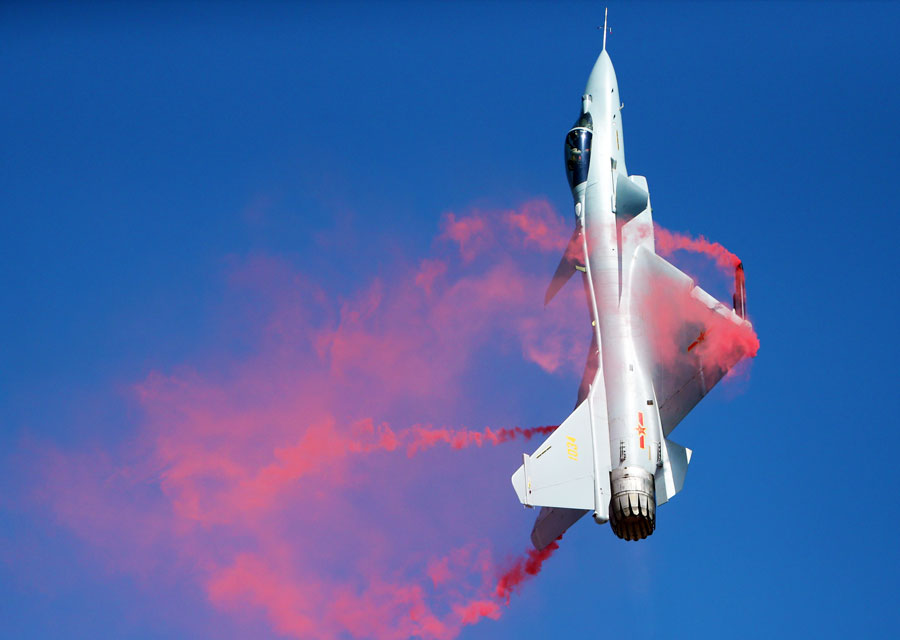
A People's Liberation Army Air Force J-10B fighter performs 'Pugachev's Cobra', a high-agility maneuver at the 12th China International Aviation and Aerospace Exhibition in Zhuhai, Guangdong province. [Photo by ZHOU GUOQIANG/FOR CHINA DAILY]
Development of thrust vector control provides improved combat capability. Zhao Lei reports.
China has mastered a field of cutting-edge aviation technology that is currently dominated by the United States and Russia, which is expected to give the nation's fighter jets better combat capability.
The technology, known as thrust vector control, involves a movable thrust nozzle that enables a fixed-wing plane to change the direction of its engine exhaust. This allows the pilot to raise the aircraft's nose cone vertically while maintaining forward momentum so the plane effectively "sits" on its own tail in an aerodynamic stall caused by low speed and a high angle of attack.
The use of such technology extensively boosts the maneuverability of a fighter jet, providing advantages in aerial combat, especially during close-range dogfights.
The idea of thrust vectoring is not new to the global aviation industry, as it has been used for nearly 100 years; first as a control mechanism for airships, and later applied to the design of fixed-wing combat planes on a small, experimental scale in 1960s.
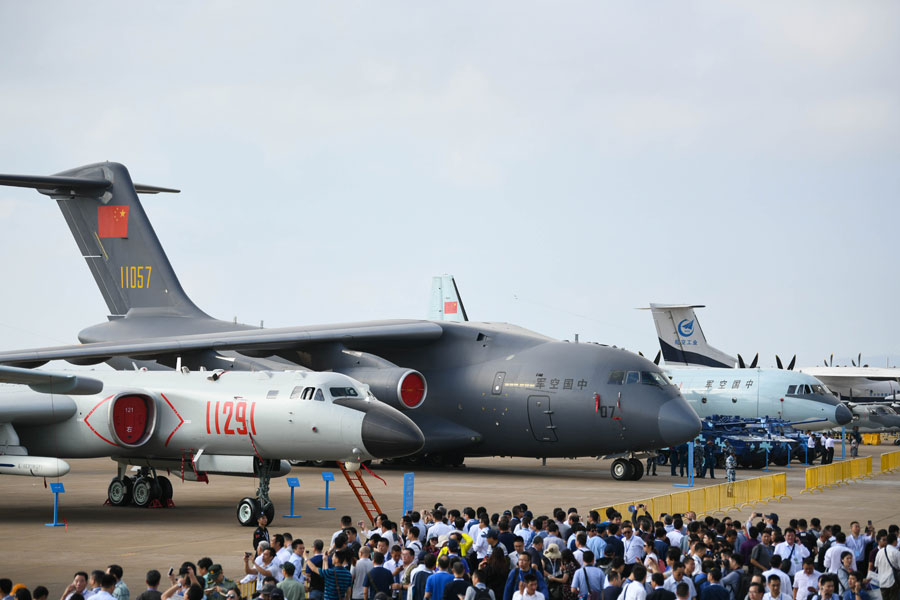
PLA Air Force planes attract attention on the tarmac. [Photo/Xinhua]
The British Hawker Siddeley Harrier attack aircraft, which had vertical/short takeoff and landing capability, was the first modern military aircraft to adopt thrust vectoring through its Rolls-Royce Pegasus engine. However, the technology was not well-developed in the '60s, and was merely tasked with achieving vertical takeoff and landing.
Starting in the 1990s, major strides were made in research into thrust-vectoring engines. Consequently, the Lockheed Martin F-22 Raptor of the US, the world's first stealth fighter jet, uses a thrust-vectoring turbofan engine that provides supreme maneuverability.
In addition to the F-22, the F-35B of the US, and Russia's Sukhoi Su-30, Su-35 and the latest model, the Su-57, all have thrust-vectoring capability.
China is reported to have been researching and developing thrust-vectoring aircraft engines for nearly two decades.
Pictures circulating on the internet indicate that Chinese engineers built at least one prototype engine at least 15 years ago, but there was no information about any other developments until late December, when details about the maiden flight of a thrust-vectoring-engined J-10B fighter jet were leaked by Chinese aviation enthusiasts. However, there was no official confirmation.
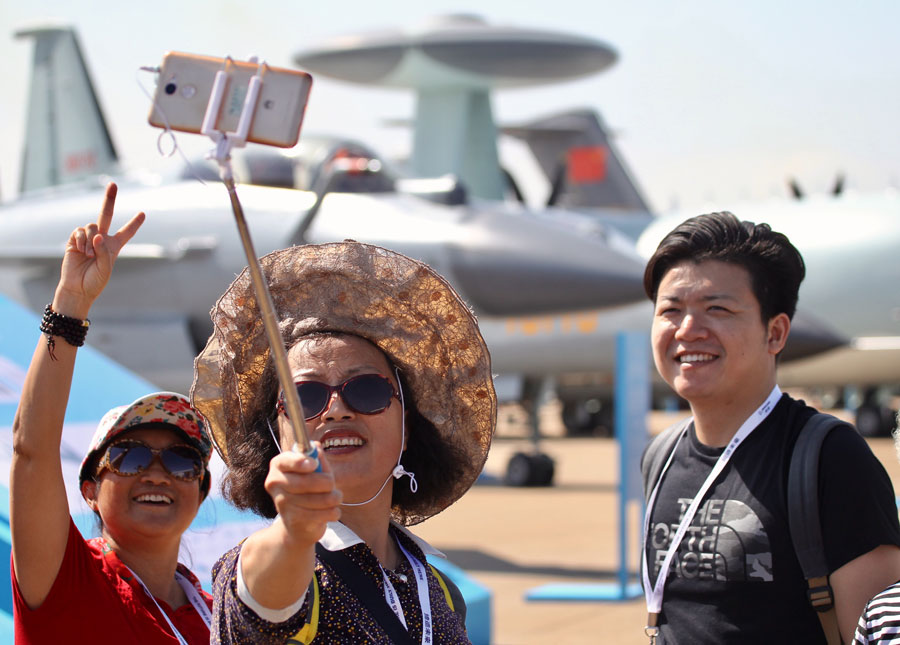
Spectators take a selfie with some planes. [Photo by ZHANG WEI/CHINA DAILY]
Declassification
The official declassification finally came last week at the 12th China International Aviation and Aerospace Exhibition, commonly known as the Zhuhai Airshow, in the coastal city of Zhuhai, Guangdong province. The State-owned defense giant Aviation Industry Corporation of China sent a J-10B equipped with a thrust vector control nozzle to perform a series of gravity-defying aerobatic stunts at the air show's opening ceremony.
The J-10B performed "Pugachev's Cobra", a highly challenging maneuver that resembles the initial attack movement of a cobra. During the maneuver, a plane raises its nose to vertical level, or even slightly beyond, before dropping back down to horizontal flight. The maneuver allows a plane to evade chasing aircraft or missiles directly behind it, and then fly behind the pursuer to engage in a counterattack.
This and other extreme-agility maneuvers in the skies over Zhuhai were accompanied by applause and cheers from thousands of spectators, and were widely considered the most impressive moments at the six-day show, which concluded on Sunday.
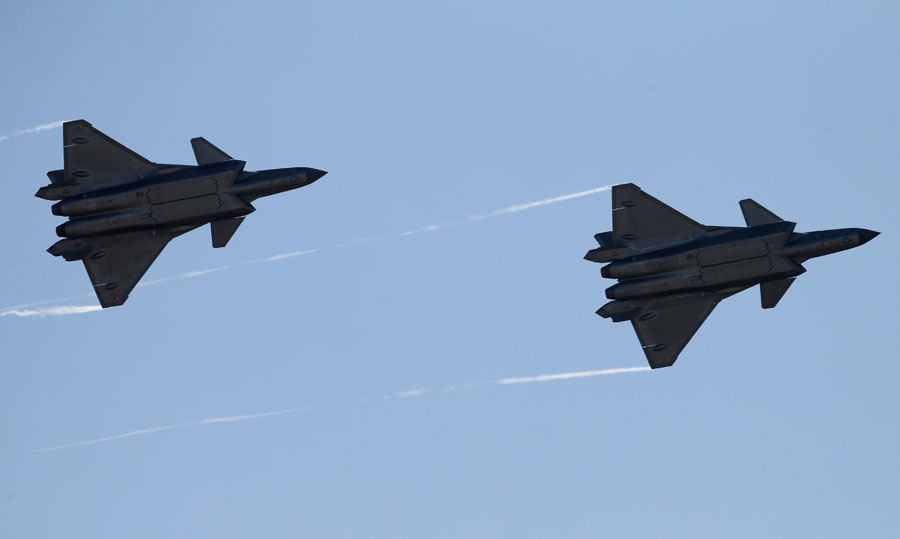
PLA Air Force J-20 stealth jets on display at Zhuhai [Photo by ZHANG WEI/CHINA DAILY]
Yang Wei, deputy general manager of Aviation Industry Corporation of China and chief designer of the J-10B, said the stunt display signaled that China has joined a handful of aviation powers that have the all-important thrust vector control technology. He added that the success should be attributed to joint efforts by his company, Aero Engine Corporation of China, along with a test flight team from the People's Liberation Army Air Force.
He said that to achieve supermaneuverability, a fighter jet not only needs a thrust-vectoring-capable engine, but also a good aerodynamic design, outstanding compatibility between the engine and the inlet, and unique flight-control equipment.
Wang Haifeng, chief engineer of the J-10B thrust-vectoring technological demonstration program, said designers overcame many technical difficulties and took several innovative approaches to build the J-10B test bed.
Responding to a reporter's question about whether the J-20 stealth fighter jet, the Chinese military's top combat plane, will be equipped with thrust-vectoring-capable engines in the future, Yang did not give a direct answer, but hinted that some J-20s have already been fitted with such engines.

J-10 fighter jets perform aerobatic manuevers during the air show [Photo by ZHANG WEI/CHINA DAILY]
Greater agility
Wang Ya'nan, editor-in-chief of Aerospace Knowledge magazine, said thrust-vectoring capability allows aviators to guide their planes to perform exceptionally agile maneuvers that conventional jets cannot perform, providing more opportunities to overcome opponents and survive.
Gao Zhuo, a military observer in Shanghai who has followed China's aviation industry for many years, said the development of the thrust-vectoring J-10B was intended to explore the adoption of thrust-vectoring capability by the J-20.
The test bed's appearance indicates that not only has China's thrust vector control technology become mature and reliable, but also that the nation's aviation industry has developed state-of-the-art flight-control systems, which are essential for sophisticated maneuvers.
He noted that the country's developments in this sphere came much faster than observers anticipated.
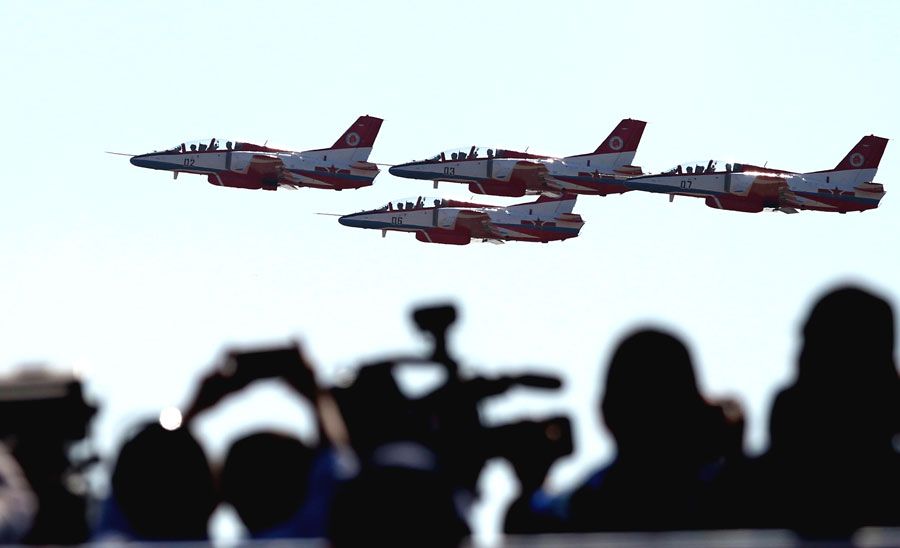
The PLA's Red Eagle display team flies in close formation. [Photo by ZHANG WEI/CHINA DAILY]
According to Gao, the thrust vector control nozzle on the J-10B is the most complicated and advanced of its kind in the world. However, he said engineers will need to conduct numerous tests and make many modifications before the technology is fully ready for the J-20.
China has designed and constructed two fifth-generation stealth combat aircraft-the J-20 and the FC-31.
The J-20, designated as a future pillar of the PLA Air Force, made its maiden flight in January 2011, and was declassified in November 2016. It was commissioned to the Air Force last year, becoming the world's third stealth fighter to enter service, after the F-22 and the F-35.
The FC-31, which appears to have been developed for export, was first flown in October 2012 and has taken part in several Zhuhai Airshows as well as arms shows overseas. It is believed to be undergoing test flights. It is not known if the FC-31 will use a thrust-vectoring engine.









